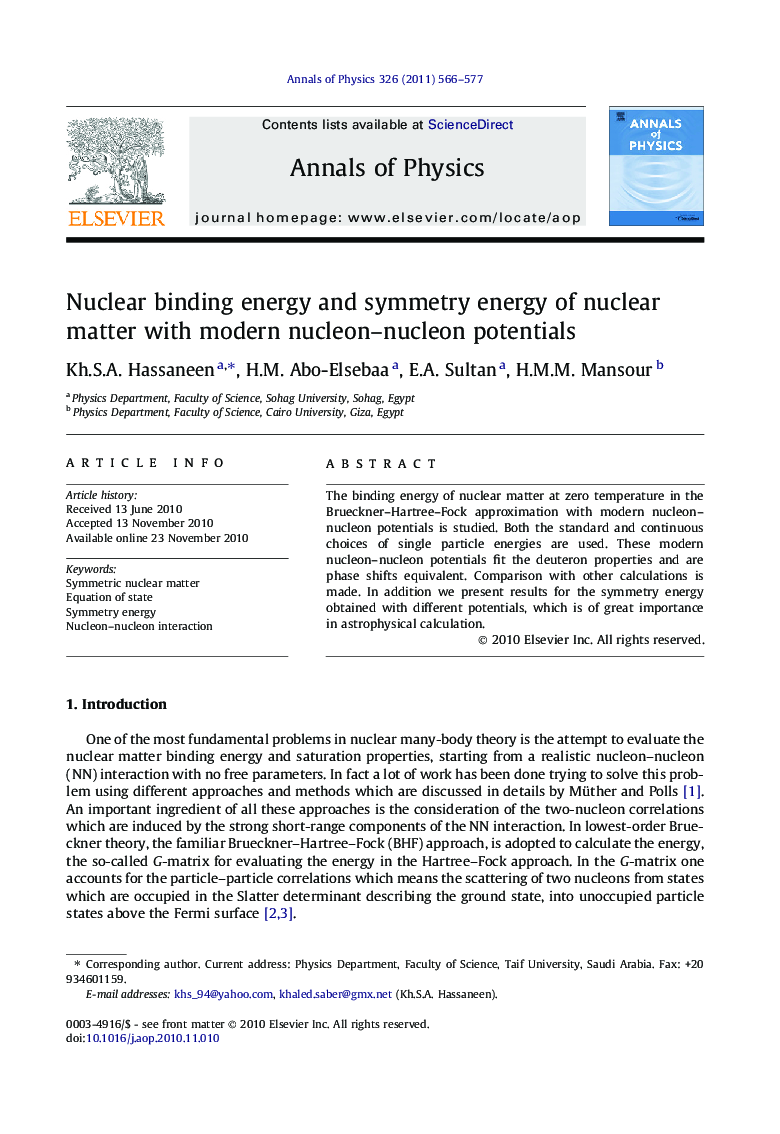| Article ID | Journal | Published Year | Pages | File Type |
|---|---|---|---|---|
| 1856770 | Annals of Physics | 2011 | 12 Pages |
The binding energy of nuclear matter at zero temperature in the Brueckner–Hartree–Fock approximation with modern nucleon–nucleon potentials is studied. Both the standard and continuous choices of single particle energies are used. These modern nucleon–nucleon potentials fit the deuteron properties and are phase shifts equivalent. Comparison with other calculations is made. In addition we present results for the symmetry energy obtained with different potentials, which is of great importance in astrophysical calculation.
Research highlights► The nuclear matter is studied within the Brueckner-Hartree-Fock (BHF) approach employing the most recent accurate nucleon-nucleon potentials. ► The results come out by approximating the single particle self-consistent potential with a parabolic form. ► We discuss the current status of the Coester line, i.e., density and energy of the various saturation points being strongly linearly correlated. ► The nuclear symmetry energy is calculated as the difference between the binding energy of pure neutron matter and that of symmetric nuclear matter.
